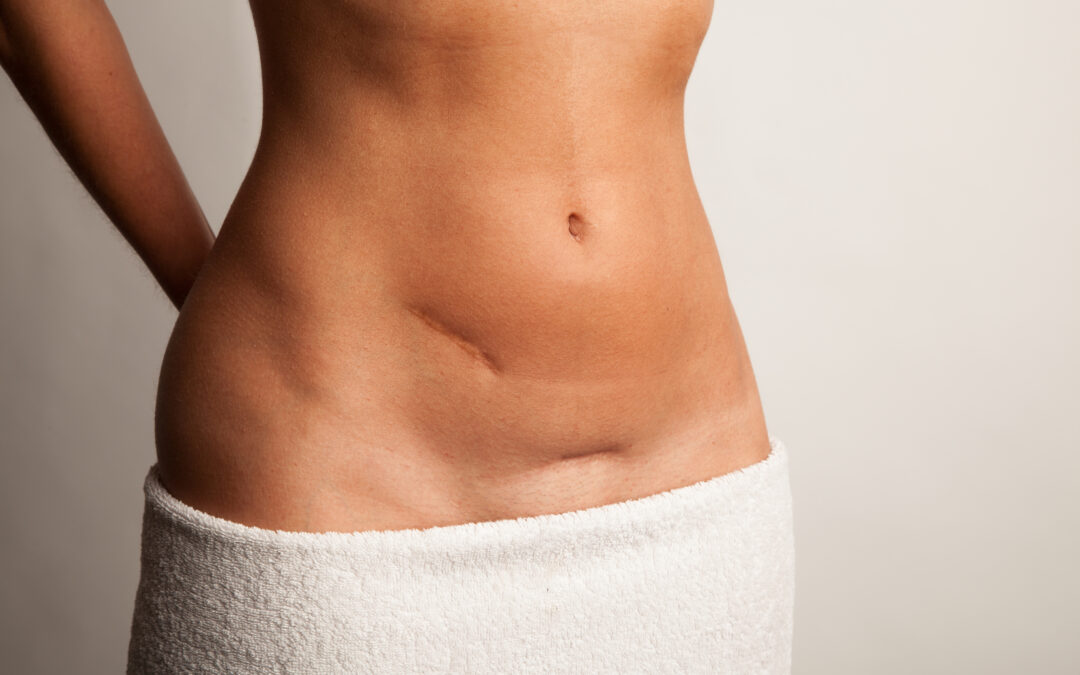Raise your hand if you have a scar somewhere on your body!
Did you know that more than 85% of women who have a vaginal delivery will suffer from perineal tearing?1 And in 2018, 31.9% of the deliveries in the US were Cesarean2. After childbirth alone, a significant portion of mamas are scarred for life, in more ways than one! ?
Scars can also result from surgeries like a gall bladder removal, appendectomy, plastic surgery, vestibulectomy… the list goes on!
Let’s pause and take a minute to appreciate our body’s incredible ability to heal itself after being injured. We love that our bodies can do that! And we are so grateful for all of the various ways doctors help us deliver our babies safely and perform surgeries that we need to stay healthy.
A properly healed scar should move well and NOT hurt!
Any time tissue has significant trauma from an incision or a tear, our bodies lay down series of fibers to heal those injuries, which forms scar tissue. While this scar tissue closes the gap, it also can become very stiff, due to the random orientation of its fibers, layered on top of each other. (Watch my video for a nice visual!)
Our bodies are full of connective tissue called fascia (see another blog post on that here), interconnecting our entire body. Facia LOVES movement, so lack of motion of the fascia can create pain right at the scar, as well as pain and limited movement in muscle, joint and skin, and pull the surrounding tissue as well. For example, even though a c-section scar on our lower abdomen, fascial tension can pull on the low back, pelvic floor, upper abdomen and diaphragm, and lead to symptoms such as urinary urgency or pelvic pain. The lack of motion can lead to pressure problems elsewhere in our “canister” and lead to issues such as prolapse and diastasis recti (DRA – the separation of the middle of the abdominal wall). Learn more about Diastasis Recti – DRA here.
Scar tightness can cause muscle weakness. Tears or incisions through musculature can also inhibit proper muscle contraction, resulting in weakness and lack of muscle coordination. Because the back, pelvic floor and deep abdominal muscles are commonly affected by scarring and tearing, poor contraction of these very important core muscles can lead to even more dysfunction.
If you have had any abdominal surgery (gallbladder, endometriosis, c-section, and others), or a tear from vaginal birth, no matter how long ago, please come in and see us! Physical Therapy can help you decrease scar tightness and pain and get those muscles working properly so you can be pain-free and get back to the activities you enjoy!
Your Physical Therapist can provide manual therapy for scarring and show you how to properly and safely do this at home as well. No scar should hurt or cause problems elsewhere. Contact us for questions about your scar or any of the other issues mentioned above.
References:
- Frohlich J, Kettle C. Perineal care. BMJ Clin Evid. 2015;2015:1401. Published 2015 Mar 10.
- Martin JA, Hamilton BE, Osterman MJK, Driscoll AK. National Vital Statistics Report. 2019;68(13).

